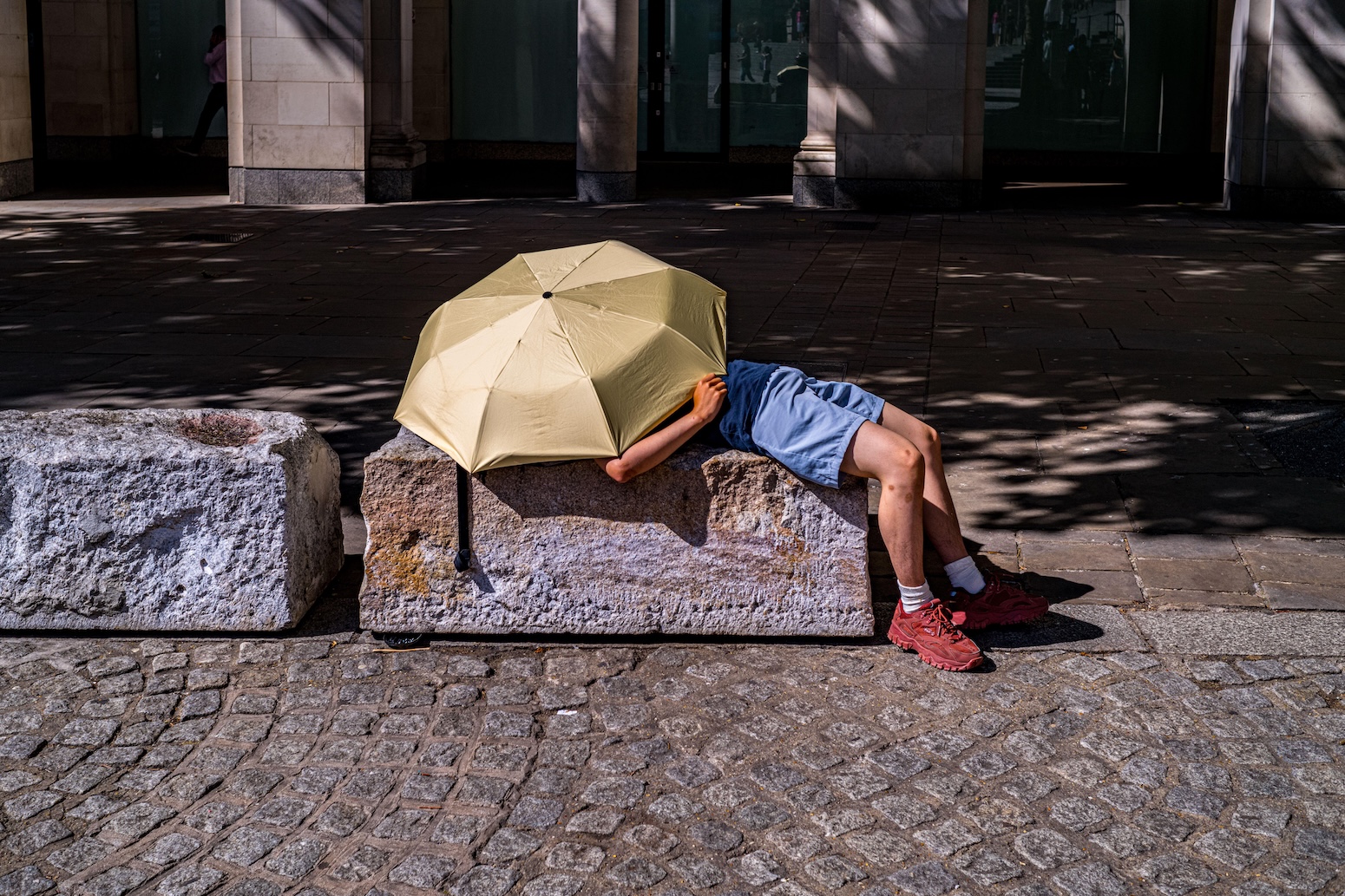When the Royal Court Theater in London announced it was staging an adaptation of Maggie Nelson’s prose poem memoir “Bluets,” my first reaction was head-scratching surprise. This largely plotless book, in which elliptical fragments of autobiography are entwined with meditations on the cultural history of the color blue and loosely coalesce around the theme of depression, doesn’t exactly scream theater.
In Margaret Perry’s adaptation, directed by Katie Mitchell and running through June 29, a trio of actors — Ben Whishaw, Emma D’Arcy and Kayla Meikle — recite passages from “Bluets” and act out moody scenes of everyday life; these are combined with innovative use of video technology and melancholic music to generate a multisensory representation of the narrator’s consciousness. It’s an admirably ambitious undertaking, but a lack of narrative thrust or tonal variation make for a somewhat bloodless experience.
The performers are stationed at three tables, each equipped with a bottle of whiskey and a tumbler. Behind each of them, a television screen plays prerecorded footage of everyday English locales: an ordinary shopping street, a subway carriage, a municipal swimming pool. Each actor is filmed by a ball-shaped camera, like a webcam, on a tripod in front of them; this footage is instantly relayed to a large movie screen, where it is superimposed over images from the TVs below, so that the actors and their backdrops merge to uncanny effect.
The gloomy aesthetic and lugubrious soundscape befit the morose timbre of the material as Nelson’s maudlin narrator reels off tidbits about her favorite color — referencing Derek Jarman, Joni Mitchell and Johann Wolfgang von Goethe — while intermittently brooding over her ex-partner, whom she addresses in wistful and reproachful tones, and recounting the struggles of a close friend who was paralyzed in an accident. (The video design is by Grant Gee and Ellie Thompson; the sound is by Paul Clark). Onstage and onscreen, we see a lot of blue: blue props, blue outfits and blue-centric video clips, including one in which a bowerbird builds a nest with bits of blue detritus.
First published in 2009, “Bluets” was reissued in 2017 after the success of Nelson’s similarly hybrid 2015 work, “The Argonauts,” which heralded a publishing fad for essay-memoirs that combined ambient erudition with diaristic introspection. But the very quality that some readers enjoy in these books — the weightlessness of the narrative, evoking an untethered, freewheeling subjectivity — makes them exceptionally ill-suited to the theater, which thrives on momentum, tension and conflict.
These elements are lacking here, and, aside from a few giggles — invariably occasioned by the narrator’s frank reminiscences about her sex life — there isn’t much mirth, either. Wishaw’s charming comic bearing does inject a sense of levity: For the past two decades, he has played a variety of roles — ranging from the poet John Keats to Paddington Bear — with a semi-abstracted, ironical air of stunned bewilderment, which is on show again here. D’Arcy and Meikle’s more wryly impassive deliveries are perhaps truer to the sardonic spirit of Nelson’s book.
The real star is the camerawork, which is at times impressively discombobulating. Every now and then, an actor lays their head on a pillow, and the lighting in their part of the stage is adjusted for nighttime; the footage relayed to the big screen from the camera in front of them doesn’t admit even the tiniest sliver of light, so that the image of slumbering calm feels strikingly hermetic, like it couldn’t possibly have been shot on this busy stage.
The Royal Court has long had a reputation for risk-taking, and this kind of vibes-based theater — in which texture, rather than action, is the driving force — is rare at major playhouses in Britain, though more common in France and Germany, where Mitchell’s work is popular. If this production drags a little, it’s because the presence of a narrator’s voice demands charisma, and Nelson’s literary achievement in “Bluets,” with its judicious cherry-picking of cultural curios, was in large part curatorial: She doesn’t have the wit and sparkle of a raconteuse.
Yet as a downbeat portrait of banal melancholia intermingled with obsessive mania, Mitchell’s “Bluets” adaptation is a competent realization of Nelson’s text. This might prompt us to consider what constitutes success in such an endeavor, and to think about the difference between a homage and an adaptation that can stand on its own. If you didn’t already know “Bluets” (the book) and went to see “Bluets” (the play), would it captivate you? I doubt it.




















Discussion about this post